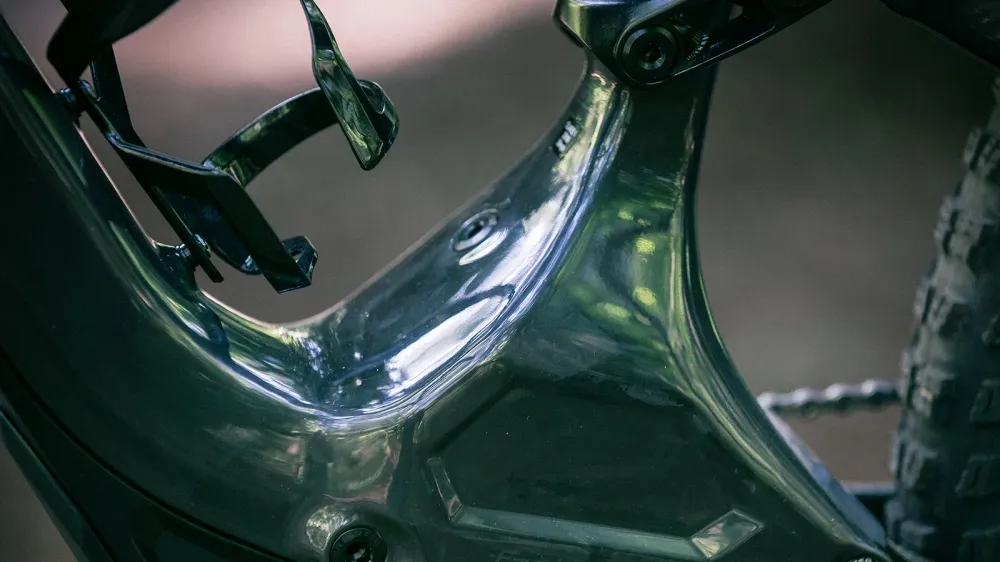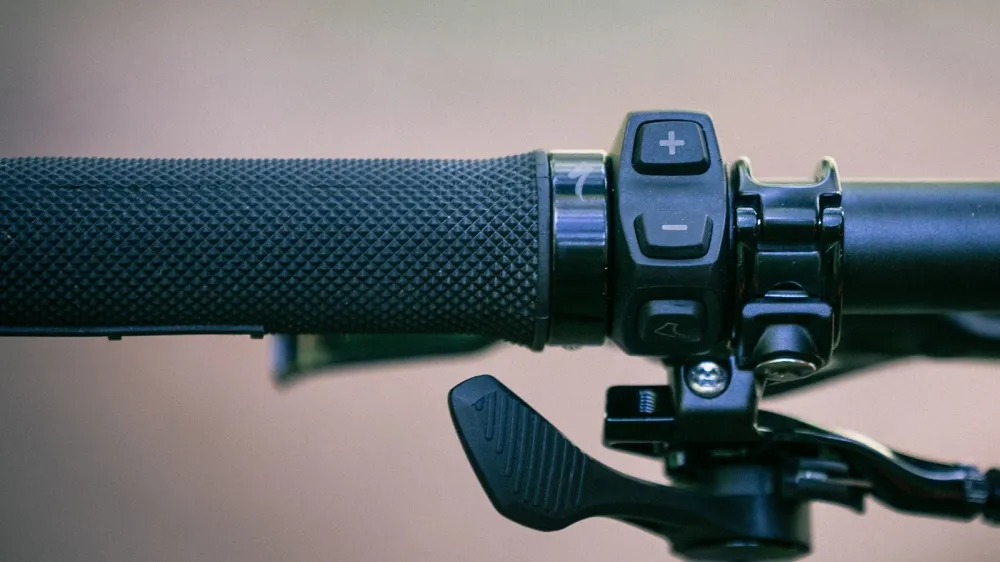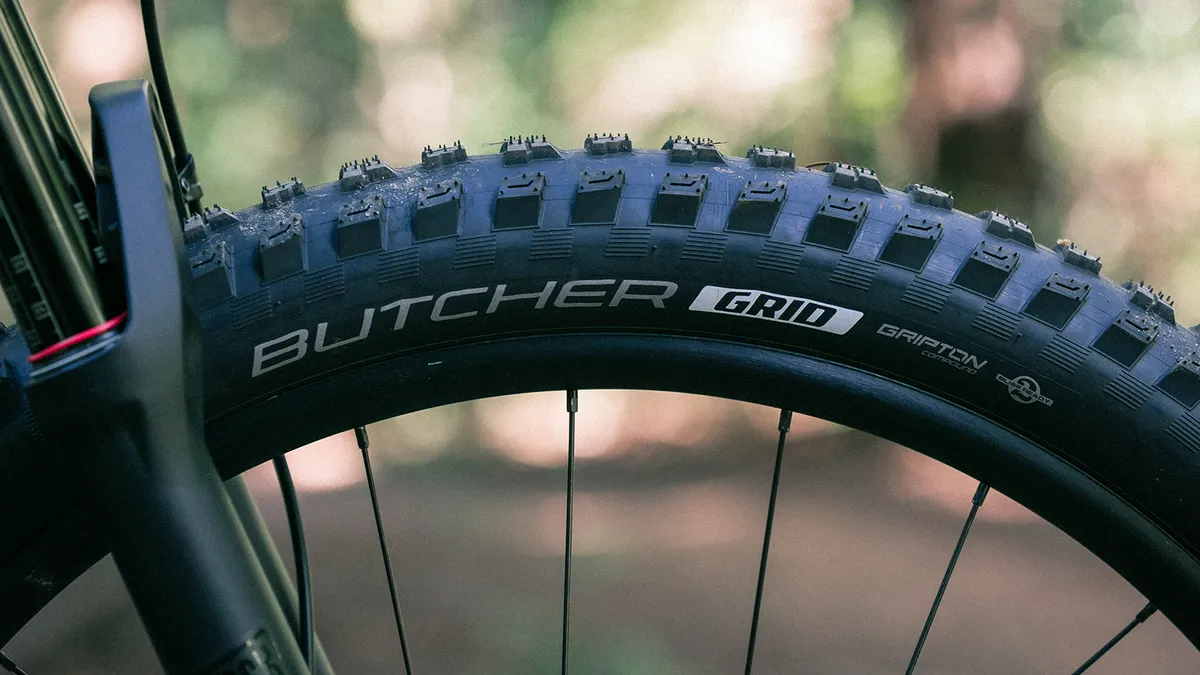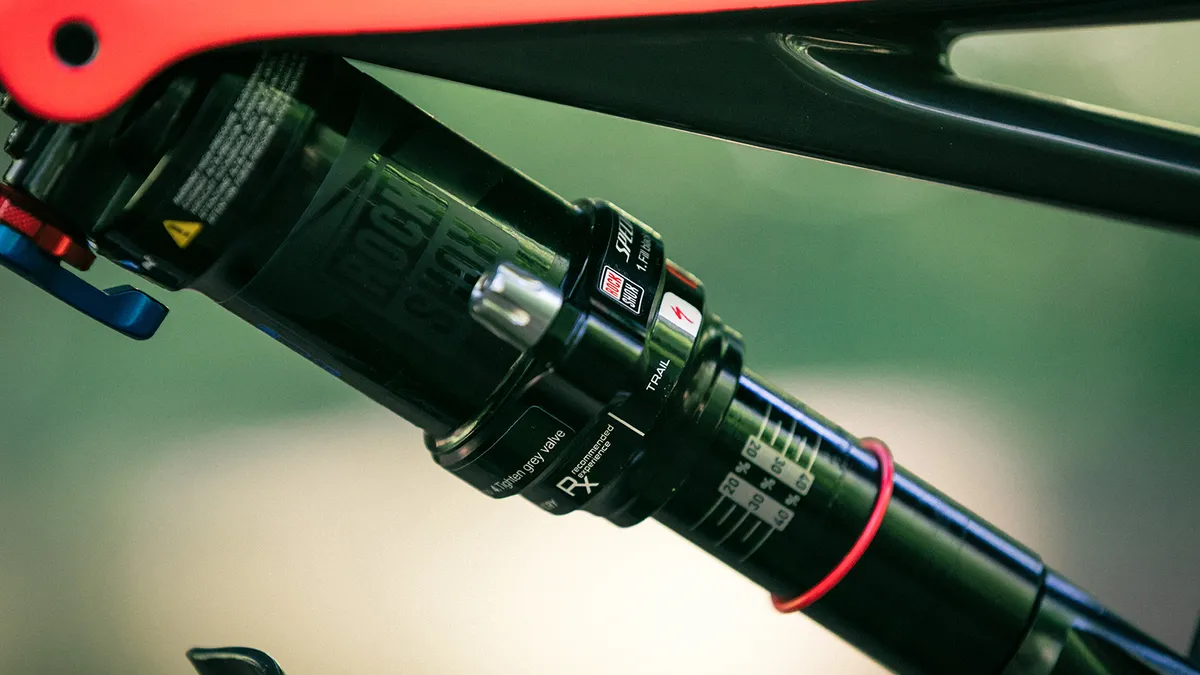If you've ever thrown a leg over an e-MTB, one thing you'll have noticed is the weight. It's no surprise then to see some of the big manufacturers taking the plunge and committing to carbon in a bid to shave off grams wherever possible. And that's exactly what Specialized has done with its Turbo Levo for 2018. That and finally including a bar mounted remote to make toggling between power modes that much easier.
I hit Mountain Creek Bikepark, New Jersey for a spin aboard the latest incarnation of the Turbo Levo.
- The Cube Sting WLS e-MTB will make you climb like an enduro champion
- Scott E-Genius first ride review
- Can an e-MTB make a molehill out of a mountain?
Specialized Turbo Levo FSR Comp Carbon 6Fattie/29 spec overview
- Frame: FACT 9m carbon front triangle, M5 alloy rear triangle with 135mm of travel
- Fork: RockShox Revelation RC with 150mm of travel
- Shock: RockShox Monarch RT with Autosag
- Drivetrain: Specialized alloy cranks, SRAM GX 1x11 gearing and Turbo 1.3 custom Rx Trail-Tuned 250w motor
- Wheelset: Roval alloy rims (38mm internal width) on Specialized alloy disc hubs
- Tyres: Specialized Butcher 2Bliss GRID 27.5x2.8in
- Brakes: SRAM Guide RE (200mm rotors)
- Bar: Specialized alloy, 780mm
- Stem: Specialized Trail, 50mm
- Weight: approx. TBC (20.8kg for the Expert, size large without pedals)
- Stack: 603mm (size medium)
- Reach: 411mm
- Wheelbase: 1185mm
- Head angle: 66.1 degrees
- Seat angle: 73.9 degrees
Welcome to the carbon club

Specialized has always been open and upfront about its goal for the Levo. For Specialized, it was all about making something that was "first a mountain bike, second a pedal assist bike", explains Joe Buckley, Specialized's Product Manager. Judge it on looks alone compared to most other e-bikes out there and they're certainly ahead of much of the competition thanks to their neatly integrated motor and battery. The geometry isn't a million miles away from what we're used to seeing on modern trail bikes either, though certainly errs towards the more conservative end of the spectrum. In size medium, that equates to an effective top tube of 581mm, a reach of 411mm and a chainstay of 459mm. That makes it shorter than the likes of the Cannondale Moterra — a bike with similar intentions and amount of travel — when we're talking about effective top tube and reach, yet is marginally longer in the chainstays.
The Turbo Levo has a considerably slacker head angle (66.1 degrees) and is a decent chunk lower at the bottom bracket though (440mm), which does make a difference on the trail.

Anyway, the big news here is the switch to the carbon frame. Battery and motor placement/access remain more or less unchanged when compared to the alloy version of the bike, but Specialized claims that the move to the composite material has, on the full carbon Turbo Levo, saved it a staggering 650g in the frame alone. That's 500g in the front triangle and 150g in the rear. Not only that, but Specialized says that the rear-end stiffness is boosted by 40 percent, while the front triangle sees an increase of 20 percent. It's worth noting that not all the bikes use a full carbon chassis though. While the top tier S-Works model receives a full complement of carbon, it is in fact the only bike in the six bike Turbo Levo FSR line-up to do so. Both the Expert and Comp (seen here) Carbon models are hybrid affairs, using Specialized FACT 9m carbon for the front triangle while their rear ends are constructed from the brand's M5 alloy.
Specialized is offering three more affordable full alloy framed models, including a shorter travel women's version too. While each of the unisex models are available in sizes small to extra-large, the short travel women's bike will only be offered in size small to large.
More power!

The latest generation of Turbo Levos now all feature the latest Brose Turbo 1.3 Rx Trail Tuned motor. Specialized claims a 15 percent increase in power over the Turbo 1.2 motor. Aside from the increase in power, the next biggest thing that many people that have ridden the Levo will appreciate is the new bar mounted 'Trail' remote. While its minimal design means there's no head up display giving you ride information, it does mean toggling between the three power modes (eco, trail and turbo) is far easier than on the previous iteration of the Levo and its size and proximity to the grip means it's easy to reach and use. It also means it integrates with other handlebar controls very neatly. There's a walk assist button now too should you need a hand when dragging the bike up something un-rideable.

What else does the new motor do then? Specialized puts a real focus on improving the Turbo Levo's ability to deal with heat build-up, an issue that could, in some circumstances, result in a loss of power on the previous Turbo Levo. How was this done? By placing thermal pads inside the motor, heat is able to be more evenly distributed internally, while additional thermal pads positioned between the motor and frame itself mean heat can actively be transferred from the motor to the frame to further cool the system.
The spec across the Turbo Levo range has been tweaked slightly. Tyres across the board have narrowed slightly, reduced from 3in to 2.8in widths
Other hardware updates include an all new electronic unit and new neodymium magnets. The recent software updates — something all Levo riders can access and benefit from — work alongside the hardware updates to produce a far more efficient system with improved power delivery and range.
For those that have spent time on an e-bike before, you'll be more than aware of the issues faced once you reach the bike's maximum speed. When you are pedalling hard down a gentle gradient, reaching the pedal assist limit doesn't take long. Once you've hit it and the motor cuts out, if you do keep the cranks turning the friction produced in some systems can feel incredibly energy and speed sapping. Thanks to the use of a double freewheel design, the Turbo Levo is able to disengage the gear box once its maximum speed limit is reached, leaving you to pedal what feels like a normal, albeit considerably heavier bike.
The Turbo M1-504 battery features an integrated LED display, which shows you which mode you're in as well as battery life. There's ANT+/Bluetooth compatibility allowing the bike to be synced to Garmin or other such devices to give you just about every bit of data you'd ever want.
Power modes can also be tailored and tuned using Specialized's updated Mission Control app. The new 'Infinite Tune' feature allows you to adjust the assist level and max motor current individually for each of the three power modes. This means loads of tuning options and the ability to properly tailor how the Levo feels in each mode.
The app's Active Smart Control feature also allows you to set your distance or ride time and determine your battery level at the end of the ride. This way you'll not get stranded part way through a ride with no juice left in the system.
Piecing together the puzzle

The spec across the Turbo Levo range has been tweaked slightly too. Tyres across the board have narrowed slightly, reduced from 3in to 2.8in widths. The reduction in volume and use of Grid casing should mean a little less tyre squirm when you do push the bikes that bit harder through turns. Another benefit from using a narrower tyre is that it drops the bike roughly 5–7mm. This has allowed Specialized to plug a longer travel fork in up front — the previous Turbo Levo used a 140mm fork, the new generation gets a 150mm travel fork.While the Comp model tested here gets a full complement of RockShox dampers front and rear, the pricier models above can be found sporting Öhlins forks and in the case of the S-Works bike, an Öhlins shock too. Interestingly, Öhlins has in fact produced a cheaper fork that uses a single rather than twin tube damper, which is what's used on the Expert model.

Specialized's choice in transmission is another point of interest. Not a single model of Turbo Levo uses SRAM's dedicated e-bike transmission, EX1. Instead Specialized opted to stick with the more traditional 11-speed set ups, all of which come from SRAM. In this case, it's GX. I'm not entirely sure why EX1 wasn't used, but I am are aware not everyone has been sold on the big gear jumps between the eight sprockets on offer. That said, one aspect of the e-bike dedicated EX1 drivetrain that did seem to really resonate with the Specialized product managers was the single click shifting that EX1 boasts. By eliminating the ability to shift multiple gears with just one big push, cross-chaining is restricted, which in turn should help reduce stress on the chain. Specialized worked with SRAM to ensure it could spec this type of shifter across all of its Turbo Levos, including the Comp pictured here.
All but the lower specced bikes get beefed up brakes too. While both the S-Works and Expert bikes get the new SRAM Code treatment (S-Works uses the Code RSC, while the Expert gets the Code Rs), the Comp uses the Guide REs. This is a combination of Guide R lever with the older shaped Code caliper, which together forms a seriously powerful alliance.
Initial ride impressions

As is the case with most press camps, my time on the new bike was extremely limited. I did manage to get a reasonable feel for it while tackling some of the more challenging terrain that Mountain Creek Bikepark has to offer though.
When pedalling up the first climb, thanks in part to the smooth power delivery and reasonably short (for an e-bike at least) chainstays, holding a wheelie was easy enough. This may sound like an odd thing to comment on, but for those who have ridden many e-bikes, popping wheelies isn't always easy. It can sometimes require numerous attempts to find the right power mode and get a good feel for the balance point.
What was noticeable was how lively things felt and easy the Turbo Levo was to throw about
It does certainly help gauge just how smoothly and easy to control the power application is though. As a comparison, the Turbo 1.3 motor doesn't quite have the same punchy, aggressive acceleration in turbo mode that its Bosch equivalent does, and feels more cadence sensitive, preferring a higher number of crank revolutions to really make the most of the assist on offer.
When things do slow down, you feel like you need to pre-empt your gear changes that bit earlier to ensure you get the most out of the system. But, that less aggressive nature and smooth power delivery is a plus in my book, especially in out of the saddle efforts and when cranking the bike hard through technical terrain — which I had do to do a lot of thanks to the mellow, rocky and super technical trails that Mountain Creek is littered with.
And it was in the flatter tech terrain where I found myself constantly toggling between power modes and using the well-positioned Trail remote. This meant I could switch into trail mode when navigating tight uphill turns to prevent pushing the front tyre wayward and understeering without letting up on the pedals.
A quick push on the button and it was back to turbo mode to ensure maximum exit speed when belting between rocky out crops or out of slower turns. The lack of display didn't ever really bother me either when riding, though you'll need to remember to check the LEDs on the side of the bike if you're riding for prolonged periods of time to ensure you've not used up too much battery life.
Faster sections of trail, where I quickly reached the speed limit of the bike but still wanted to pedal, didn't feel as labour intensive thanks to the motor de-coupling. Okay, it's still a heavy bike, but limiting friction through the transmission once you've surpassed the motor assistance makes a notable difference to the overall ride experience.
When it comes to the weight, yes, the new carbon Turbo Levo does feel noticeably lighter in a number of situations without detracting from the planted e-bike feel that can be a real benefit at times, especially in loose, steep situations. Still, what was noticeable was how lively things felt and easy the Turbo Levo was to throw about.
The Guide REs are a formidable set of stoppers and I had no issues with fade or pumping on long descents
Thanks to Mountain Creek's abundance of jump trails, it was good to find out that, should you wish to get airborne, the Turbo Levo feels well balanced in the air and if you're happy to, can be muscled about if you do like pulling shapes.
While I feel like I could have easily ridden the large bike for a bit more in terms of reach and high-speed stability, the medium's geometry sits you fairly centrally between the wheels, so I never struggled when the going got rough. Again though, I'd like to try the bike at home on familiar trails before I comment further on this, but a touch more reach wouldn't do any harm.
For me, plus size tyres bring both good and bad points. Through the nadgery, slippery rock and root sections I was faced with, the forgiving 2.8in tyres are a big benefit, adding that all important traction to maintain your trajectory through a section or simply let you brake hard enough when the going got steep. In the higher speed bike park sections of the trail there's still some squirm when you do start pushing hard into turns though, which not everyone will be a fan of.
The suspension feel is decently balanced however and while the Motion Control damper inside the Revelation fork might not be quite as refined as the pricier Charger equivalent, it'll still more than hold its own when things do get ugly and can easily be tuned to add a little more ramp up should you need it.
At the rear, I never felt like I was plunging through the travel too rapidly and was impressed with just how well the Monarch damper handled some of the more brutal landings.
The Guide REs are a formidable set of stoppers and I had no issues with fade or pumping on long descents, which is a bit plus. There's plenty of controllable power on tap that will get you to a stop incredibly quickly.
On the whole then, I was impressed by the Turbo Levo Comp Carbon. Its weight, shape and balance mean it's one of the closer e-MTBs to a regular mountain bike, and its smooth power delivery means it doesn't take a great deal of time to get used to. I'm looking forward to getting one onto more familiar trails in the near future so stay tuned for a full review.
Early verdict
The reduction in weight, slick integration and smooth power delivery combine to make this a seriously capable and fun bike to tackle a wide variety of trails. It's not the most radical e-bike in terms of geometry, but it's certainly getting closer in terms of the fit and feel of a regular trail bike.
Range and pricing at a glance
- S-Works Turbo Levo FSR 6Fattie: £8,999 / $9,500 / AU$TBC
- Turbo Levo FSR Expert Carbon 6Fattie: £6,250 / $7,500 / AU$TBC
- Turbo Levo FSR Comp Carbon 6Fattie: £4,999 / $5,500 / AU$TBC
- Turbo Levo FSR Comp 6Fattie: £4,250 / $4,500 / AU$TBC
- Turbo Levo FSR 6Fattie: £3,500 / $4,299 / AU$TBC
- Turbo Levo FSR Women's Comp 6Fattie: £N/A / $5,500 / AU$TBC
- Turbo Levo FSR Women's Short Travel 6Fattie: £3,500 / $4,299 / AU$TBC
- Turbo Levo Hardtail Comp 6Fattie: £3,250 / $4,000 / AU$TBC
- Turbo Levo Hardtail Women's Comp 6Fattie: £N/A / $4,000 / AU$TBC
